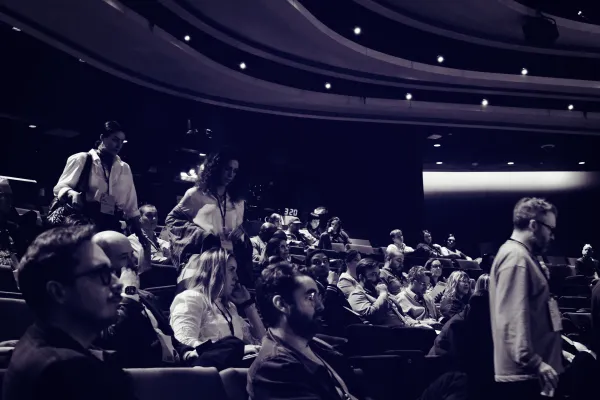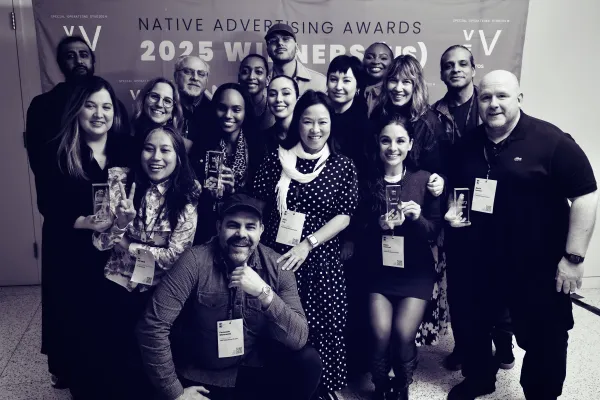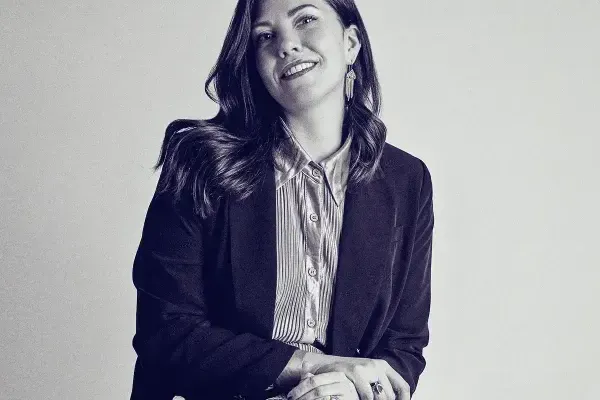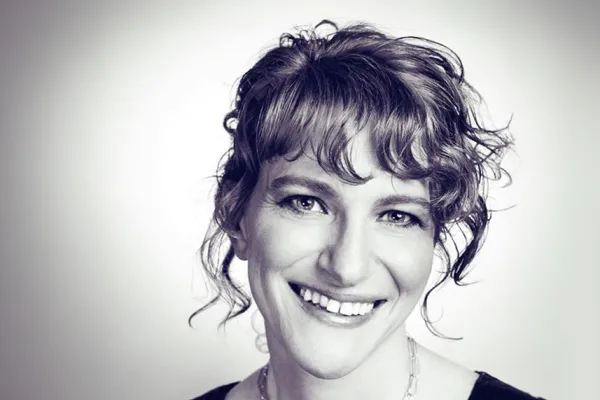
 Details
Details
When David Berkowitz founded the AI Marketers Guild, it wasn’t because he saw a trend—it was because he saw a gap.
“There was nothing really peer-led across creative and media fields where folks could just learn from each other,” he says. “So this has just been a great way to spark conversations, accelerate learning, and get inspired.”
Today, Berkowitz is one of the most respected voices in AI marketing—not only for his insights on emerging tools, but for the human-first lens he brings to every conversation.
At the Jury Summit prior to Branded Content Days 2025 in New York, his message to studio and agency leaders was refreshingly grounded: “Humans still matter—and I hope to hell humans will always matter.”
“You’re not nearly frightened enough.”
Berkowitz doesn’t sugarcoat the scale of the shift creative teams are facing. “Everyone comes in with their own challenges, their own biases. But the creative process is changing—and that’s daunting,” he says.
When speaking to media executives, he often channels a scene from The Lord of the Rings, when Aragorn warns the hobbits: Are you frightened? You’re not nearly frightened enough.
“It’s not about fear for fear’s sake,” he explains. “It’s about understanding the urgency. You have to be scared enough to act—to adapt. Otherwise, you’re not going to see what’s coming.”
For Berkowitz, adapting doesn’t mean abandoning craft or creativity. It means rethinking how teams work, how voices are included, and how tools are applied—not just for efficiency but for transformation.
The real disruption isn’t tech—it’s culture
Berkowitz believes the biggest shift AI brings isn’t technical—it’s cultural.
“There are organizational leaders asking, ‘How do we cut costs? How do we increase margins?’ And sure, AI can help with that,” he says. “But that’s very different from asking, ‘How can we future-proof our business? How can we grow in a smart, sustainable way?’”
This, he says, is where change management becomes crucial. Leaders must guide teams through uncertainty, skepticism, and even fear. “Some people feel threatened. And that’s legitimate,” he notes. “I felt it myself when I was writing my book.”
As AI writing tools improved, Berkowitz experimented with having them structure his book proposal and generate drafts based on his past work. “But I hit a point where I realised—I wasn’t writing my book. I was writing to someone else’s outline. It was like working off a brief I didn’t believe in.”
The solution? Injecting his own experiences, stories, and voice. “It wasn’t the smartest thing ever written,” he admits. “But it was mine. And that made all the difference.”
AI as a creative sparring partner
Rather than replacing creativity, Berkowitz sees AI as a sparring partner—something that sharpens ideas and makes collaboration more dynamic.
“In the past, getting an idea in front of a creative team was hard,” he says. “You’d have to find the words, and then they’d build the visuals around that. Now we can speak more of the same language—faster. That’s exciting.”
He points to cultural phenomena like the Studio Ghibli-style filter that recently crashed ChatGPT’s servers. “Sure, it’s a silly meme,” he says. “But it’s also a glimpse into how people want to see themselves reflected in branded content. It’s shareable, it’s personal, and it invites participation.”
That, he believes, is where branded content can thrive with AI—not by churning out mass-produced assets but by empowering people to co-create and explore new versions of themselves.
Differentiation is everything
Berkowitz urges branded content studios to stay focused on what makes them distinct.
“What makes the team at the Wall Street Journal different from Forbes or Fortune? It’s their fingerprint,” he says. “That should come through in the work.”
If your AI-generated chatbot sounds the same as a competitor’s—or if your visuals look interchangeable with every other studio’s—then you’ve lost your edge.
“There was an exercise I used to do where we’d look at two brand chatbots. If you removed the logos, could you tell them apart?” he recalls. “That’s the challenge now, too. If all your AI-generated content looks the same, you probably should be using AI. But the job of the creative team is to go beyond that. To add the spark.”
This, he argues, is why upskilling matters. “Yes, everyone can type a prompt into ChatGPT. But not everyone can craft something memorable, distinct, and on-brand.”
Letting new voices in
Berkowitz closes with a call for openness—not just to tools, but to people.
“If you ban ChatGPT in your workplace, it’s like banning Facebook 15 years ago. People will just use it on their phones,” he says. “So bring it in. Let people test. And listen to where the best ideas come from—because they can come from anywhere.”
He shares the story of an intern at one of his former agencies who came up with the winning idea for a major H&R Block campaign. “That intern became a full-time hire and went on to do great things. But it started because someone made space for their voice.”
This, to Berkowitz, is the promise—and the responsibility—of AI: to democratise creativity, not centralise it.
“There’s a push and pull,” he says. “Yes, we’re seeing more access to powerful tools. But we’re also seeing the concentration of that power in big tech. So we have to make space for people—creators, marketers, brands—to maintain their own voice, their own audiences.”
Because, in the end, the tools will keep changing. The tactics will keep accelerating. But the core truth remains.
“Humans still matter,” Berkowitz says. “And if we don’t believe that, then what are we even building?”





